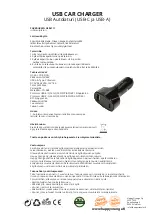
Your vehicle has seat-mounted side impact airbags.
Your vehicle may have roof-rail airbags. See Airbag
System on page 1-54. Seat-mounted side impact and
roof-rail airbags are intended to inflate in moderate
to severe side crashes. Seat-mounted side impact and
roof-rail airbags will inflate if the crash severity is
above the system’s designed threshold level. The
threshold level can vary with specific vehicle design.
Seat-mounted side impact and roof-rail airbags are
not intended to inflate in frontal impacts, near-frontal
impacts, rollovers, or rear impacts. A seat-mounted
side impact airbag is intended to deploy on the side
of the vehicle that is struck. Both roof-rail airbags
will deploy when either side of the vehicle is struck.
In any particular crash, no one can say whether an airbag
should have inflated simply because of the damage
to a vehicle or because of what the repair costs were.
For frontal airbags, inflation is determined by what the
vehicle hits, the angle of the impact, and how quickly
the vehicle slows down. For seat-mounted side impact
and roof-rail airbags, deployment is determined by the
location and severity of the side impact.
What Makes an Airbag Inflate?
In a deployment event, the sensing system sends an
electrical signal triggering a release of gas from the
inflator. Gas from the inflator fills the airbag causing the
bag to break out of the cover and deploy. The inflator,
the airbag, and related hardware are all part of the airbag
module.
Frontal airbag modules are located inside the steering
wheel and instrument panel. For vehicles with
seat-mounted side impact airbags, there are airbag
modules in the side of the front seatbacks closest to
the door. For vehicles with roof-rail airbags, there are
airbag modules in the ceiling of the vehicle, near the
side windows that have occupant seating positions.
How Does an Airbag Restrain?
In moderate to severe frontal or near frontal collisions,
even belted occupants can contact the steering wheel
or the instrument panel. In moderate to severe side
collisions, even belted occupants can contact the
inside of the vehicle.
Airbags supplement the protection provided by safety
belts. Frontal airbags distribute the force of the impact
more evenly over the occupant’s upper body, stopping
the occupant more gradually. Seat-mounted side impact
and roof-rail airbags distribute the force of the impact
more evenly over the occupant’s upper body.
1-60
Summary of Contents for 2008 DTS
Page 140: ...NOTES 2 66...
Page 143: ...NOTES 3 3...
Page 144: ...Instrument Panel Overview Console Shift Model shown Column Shift Model similar 3 4...
Page 260: ...NOTES 3 120...
Page 294: ...NOTES 4 34...
Page 400: ...NOTES 5 106...
Page 415: ...Engine Drive Belt Routing 4 6L V8 Engines 6 15...
Page 436: ...NOTES 7 18...
















































